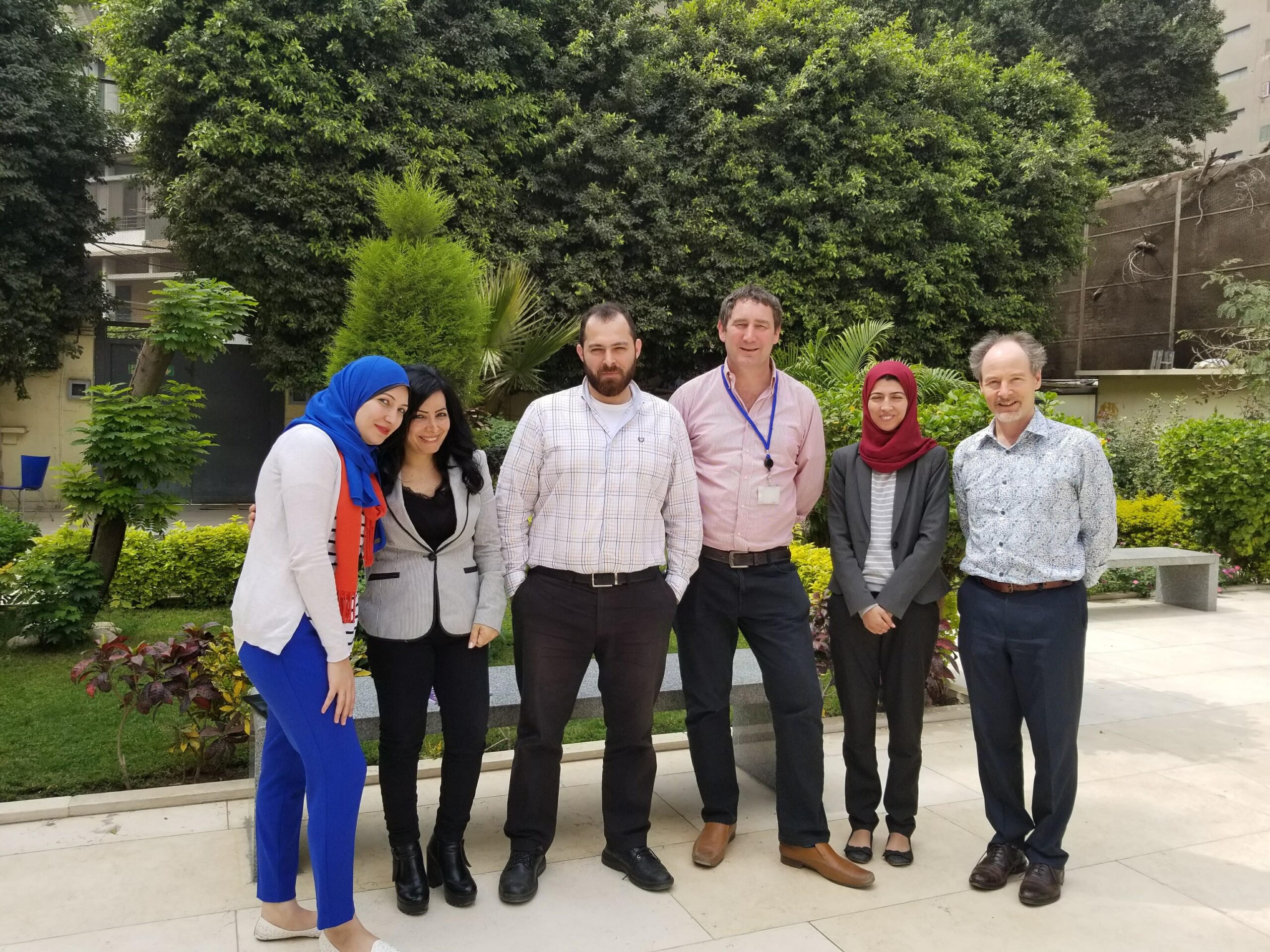The HOPES Madad project was set up by European Union agencies to support Syrian refugees moving into higher education. In this interview, Clarity’s Technical Director Adrian Raper (AR) discusses the project, and the role played by the Dynamic Placement Test, with Harry Haynes (HH) and Hala Ahmed (HA) of the British Council.
AR: First of all, what is the HOPES project?
HH: HOPES is funded by the EU Madad fund, and it’s a response to the Syrian crisis. It’s a consortium of four European partners: the German Academic Exchange Service (DAAD) together with the British Council, Campus France and Nuffic from the Netherlands. We’re working in five countries — Egypt, Turkey, Lebanon, Jordan and the Kurdistan region of Iraq — and we’re trying to address the lack of higher education for Syrian refugees in the countries surrounding Syria. There are a lot of projects helping with children’s education, but there’s a shortage of action focused on the number of people completing degrees. The number of young Syrians graduating is only about a quarter of what it would normally be.
There are several obstacles we have to overcome: lack of documentation, financial problems, personal issues the students have as refugees. The British Council’s work is focused on the language barriers. The Syrian education system is 100% in Arabic, but in Egypt — and to some extent Turkey — subjects like Medicine or Engineering would be taught in English.
So, we’re aiming to get 4,000 students, 70% Syrian and 30% local students, through an English programme with the aim of getting them to improve their English proficiency by one CEFR level. We give them a placement test, a 100-hour face-to-face course, delivered at their local university, and then an exit test.
AR: Which tests have you chosen?
HA: For the exit test we are using Aptis. It’s accurate, reliable and it’s good as an exit test because it includes all four skills, and it’s a qualification they can use to show potential employers and education providers.
For the placement test, we chose the Dynamic Placement Test. It doesn’t require a strong Internet connection, and that is very important for us if we are working with universities which don’t have a sophisticated infrastructure. Also the test is adaptive, it randomises the questions and it reflects the students’ language proficiency level accurately.
AR: What is the language level of the students when they start the course?
HA: Well, we’re in the early stages but we’ve already run about 900 tests in three countries: Jordan, Turkey and Lebanon, where we started. In Lebanon we’ve tested in four separate locations. The majority of students come out as A1 or A2 but we have a substantial minority at the B level, and a few at C1 and even C2.
AR: Can you tell me about the 100-hour course?
HH: Yes. The courses are run in local institutions by teachers selected by the institution and HOPES, and we give them training and support in delivering the programme. Each class has no more than 25 students, and the course includes 100 hours of class time, plus around 40 hours of online study by the students in their own time.
The course content is practical and related to daily life, education and work. We try to tailor it to the needs of specific groups of students. For example we might work on English for a particular area of study such as Engineering.
AR: Are students used to working with computers?
HH: They often do need support getting set up — logging in, for example. An important issue is that most of the refugees have a smartphone, but most students have never learned anything online before. They’re not used to using it for that purpose and they’re not very familiar with using a desktop computer or a laptop, so there is a gap with IT skills.
AR: Is the project as a whole progressing as planned?
HH: We have 500 students who have completed the whole course, and another 800 currently enrolled. The majority of students who complete the course do go up by one CEFR level in their exit test. This means they can go on and complete their studies more successfully.
As you can see, this work can be life-changing. That’s why the British Council is very keen to be a strong partner with the EU and the EU Madad project. We want to use the British Council network and resources to support the EU in doing this work. We think of it as a very positive example of European collaboration.
You can learn more about HOPES at http://www.hopes-madad.org/

